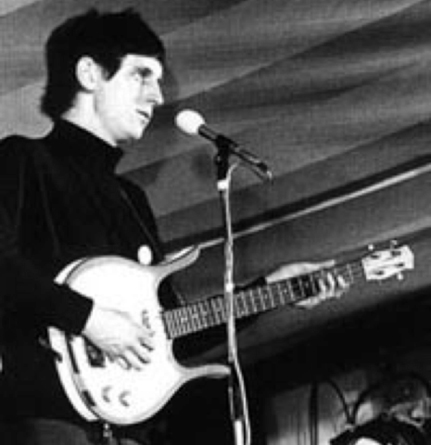Danelectro Longhorn

Finally! A non-Maton story! Thanks to Bas from Holland for this great guitarnerd article on the iconic Danelectro Longhorn.
The first reaction I get when I show anybody my old Danelectro Longhorn is usually along the lines of: “That’s one weird looking guitar” or “Nice shape, I guess..” But with this bass for me, it’s not all about the looks; it’s about the history attached to it. Even though I love the shape a lot, I will tell you a bit more about the role of this bass in Dutch popular culture.
This bass has been used by a variety of rock legends from Holland. Let’s start with Rinus Gerritsen the bass player for perhaps the Netherlands most famous rock band Golden Earring. In the clip below you see a bass solo he did on a longhorn. His signature bass is a modified longhorn bass with 2 necks, One of them a Fender Precision neck and the other one the normal Danelectro neck. Golden Earring is a special band for me because I grew up listening to them. My dad listened to their music almost exclusively and owns the bulk of all the records they made (they released over 30 albums!) When I was 13 I did a lip synching performance of Paradise in Distress (with the amazing lyrics: “The Devil just bought a brand new penthouse in heaven, there goes the good old neighborhood”) with sunglasses on and everything.
httpv://www.youtube.com/watch?v=qXXuR5bCoKk
The second legendary player is Klaasje van der Wal who played bass in Shocking Blue, famous for songs like Venus and Love Buzz. There is a great story connected to Venus, the first Dutch song to ever be internationally acclaimed. The opening lyrics “Goddess on a mountaintop” were wrongly recorded as “Godness on a mountain top” which for is very typical for the Dutch people in the 60ies who wanted to be up to UK and US standards, but sometimes lacked a bit of skill in the English language.

httpv://www.youtube.com/watch?v=yyOM_Taf2AY
Then we have Frank Kraaijeveld, another Dutch rock legend, although a lot less known as Golden Earring and Shocking Blue, Frank Kraaijeveld has been playing in de Bintangs for over 50 years. The video below has one of their songs from 1969, a great psychedelic blues jam which I didn’t even expect could have come from a couple of teenagers from Beverwijk in the sixties.

httpv://www.youtube.com/watch?v=weIonQAEy2c&feature=related
It is interesting to know why all these players started on Danelectro’s instead of Fenders or Gibsons. Fender and Gibson didn’t have a distributor in Holland in the early sixties, Danelectro did have one. Dutch teenagers wanted to play American guitars so bad so they went for the only American brand available; Danelectro. There is also a special run of Longhorn basses that were only available in the Netherlands. Like my bass the headstock doesn’t read Danelectro but Longhorn.

This was due to an order placed in 1969 when Danelectro went bankrupt, they did deliver their order to a Dutch store, but because of legal issues they couldn’t use the name Danelectro anymore. As far as I know only the Netherlands have basses that read Longhorn.
When entering one of my favorite guitar stores in Amsterdam called Palm Guitars last week, I found the Italian guitar version of the Longhorn bass, which I quickly made a picture of with my mobile phone. It’s made by the Italian brand Dynelectron that is a sub brand of Meazzi. It has a whopping 31 frets! The highest frets are so close to each other that it is almost impossible to fret notes properly, let alone to play chords.

The last bit of trivia about this model bass is about John Entwistle, bass player for The Who. I read the following quote on the bass solo from My Generation from Thewho.net
“I played that solo on a Jazz bass with tapewound strings through a Marshall 50 watt and 4×12. Interestingly, the bass solos on the earlier takes were much more complicated, and played on a Danelectro which had a much more piano-like sound. It was a medium scale bass with a two-octave neck. The trouble was that the strings were so thin that I kept breaking them. We’d record during the day and, to finance the sessions, we were playing gigs nearly every night, and inevitably I’d break a string. None of the music shops had any replacement strings and no string manufacturers made replacement strings thin enough for Dano basses then, so I had to go down to Marshall’s and buy a new Dano for £60. I ended up with three new Danelectros, all with busted strings! In the end I busted my last string at the third attempt and there weren’t any more in the country. I thought, ‘Fuck it’, and went and bought myself a Fender Jazz bass and a set of La Bella strings, and played the solo with that. But it was a different sound and a simplified, slowed-down version of the solos on previous takes.”


i’m pretty sure i’ve mentioned this, but about 15 years ago i breifly played a Maton Longhorn bass, serial number was PRO -OO1. just to keep on the Maton track hahaha! it had been modded from memory though.